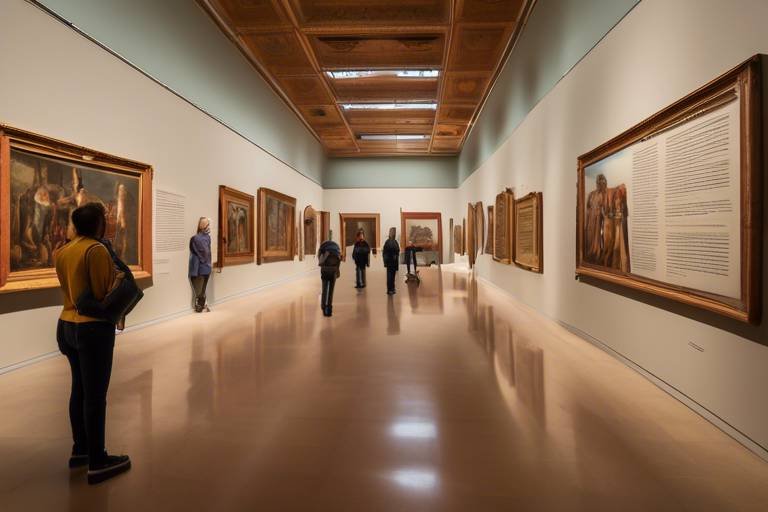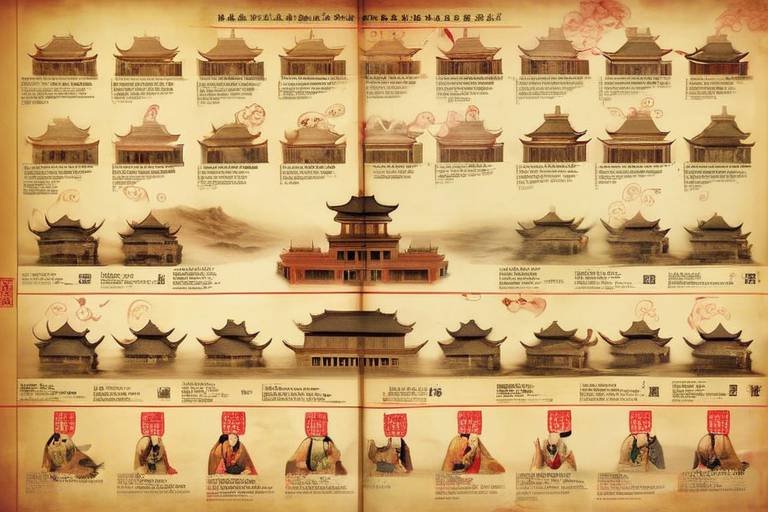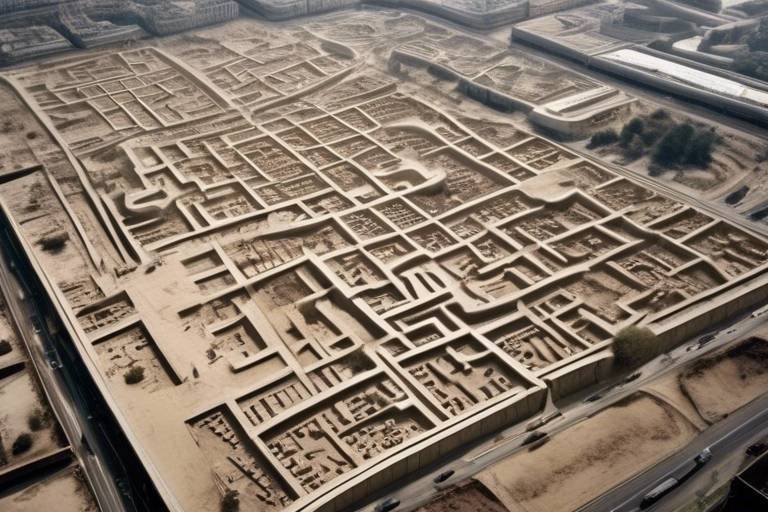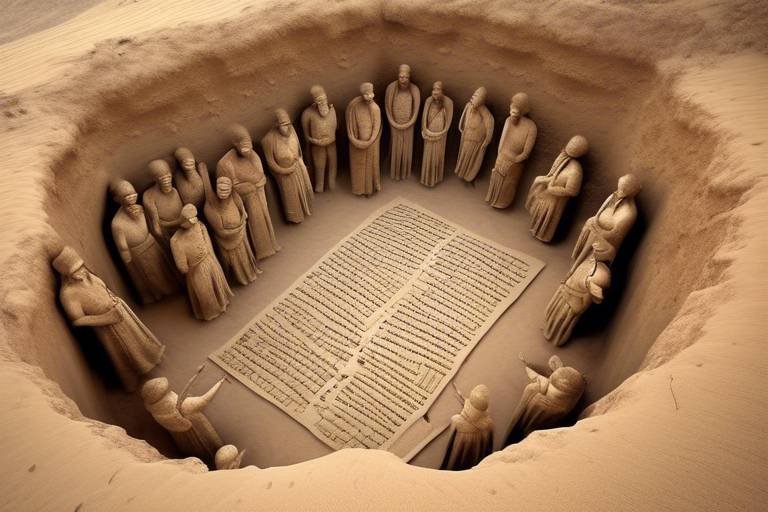How Ancient Coins Reflect Economic Systems
When delving into the world of ancient coins, we uncover a treasure trove of insights into the economic systems that shaped the civilizations of the past. These small, metallic discs serve as windows to the past, offering glimpses into the trade, commerce, and monetary policies of bygone eras. As we examine the intricate designs and markings on these ancient artifacts, we begin to unravel the complex tapestry of economic structures that underpinned ancient societies.
Ancient coins have a fascinating story to tell, one that spans centuries and continents. From the earliest forms of currency used in barter systems to the standardized minted coins of ancient empires, the evolution of coinage mirrors the development of economic systems. Each coin carries within it a piece of history, a testament to the economic prowess and ingenuity of the civilizations that minted them.
The symbolism and imagery engraved on ancient coins offer a glimpse into the values and beliefs of ancient societies. Whether depicting powerful rulers, mythical creatures, or religious symbols, these designs reflect the economic, political, and cultural ideologies of their time. By studying these symbols, we gain a deeper understanding of the societal norms and aspirations that drove economic activities.
The production techniques employed in crafting ancient coins showcase the remarkable craftsmanship and metallurgical knowledge of ancient civilizations. From casting and striking to engraving and minting, each coin was a labor of skill and artistry. The intricacies of these techniques highlight the importance placed on creating a durable and aesthetically pleasing form of currency.
Coins played a vital role in facilitating trade and commerce in ancient societies. As mediums of exchange, they streamlined economic transactions and enabled the growth of markets and economies. The widespread circulation of coins helped standardize value and fostered economic interactions beyond local boundaries, paving the way for interconnected trade networks.
Monetary policies in ancient societies were often shaped by the issuance and circulation of coins. By controlling the supply and distribution of currency, rulers could influence economic stability and growth. The debasement or devaluation of coins posed challenges to the integrity of the monetary system, leading to fluctuations in prices and eroding public trust in the currency.
The discovery of ancient coin hoards provides valuable insights into economic activities and wealth distribution in the past. These hidden treasures offer glimpses into the patterns of trade, taxation, and wealth accumulation prevalent in ancient societies. Archaeologists and historians analyze these hoards to piece together the economic landscapes of bygone civilizations.
The legacy of ancient coins continues to resonate in modern economics, serving as a bridge between the past and the present. The study of ancient coins informs modern economic theories and practices, shedding light on the evolution of monetary systems and economic thought. By examining the economic principles embedded in ancient coins, we gain a deeper appreciation for the enduring impact of economic systems throughout history.

Evolution of Coinage
When delving into the evolution of coinage, we embark on a journey through time, witnessing the transformation of primitive forms of currency into the standardized minted coins we recognize today. The history of coinage is a testament to the ingenuity and innovation of civilizations in developing efficient means of trade and exchange. From the bartering of goods to the introduction of metal coins, the evolution of coinage mirrors the advancement of economic systems and the sophistication of societies.

Symbolism on Ancient Coins
Exploring the significance of ancient coins in understanding the economic systems of civilizations throughout history, shedding light on trade, commerce, and monetary policies of bygone eras.
Tracing the evolution of coinage from early forms of currency to standardized minted coins, showcasing the development of economic systems.
Ancient coins are not merely pieces of metal but bearers of rich symbolism that offer insights into the economic, political, and cultural values of ancient societies. The imagery engraved on these coins often depicted rulers, deities, or significant events, serving as a reflection of the beliefs and ideologies prevalent at that time. These symbols were not just decorative but carried deep meanings that resonated with the people using them, shaping their perceptions of wealth, power, and identity.
Examining the techniques and technologies used in the production of ancient coins reveals the remarkable craftsmanship and metallurgical knowledge of ancient civilizations. From hammering and casting to minting with precision tools, the intricate process of coin production showcased the advanced skills and ingenuity of ancient craftsmen. The choice of metals, the designs engraved, and the minting methods all contributed to the unique characteristics of each coin, reflecting the sophistication of ancient metallurgy.
Coins played a pivotal role in facilitating trade and commerce in ancient civilizations by providing a standardized medium of exchange. The universal acceptance of coins enabled seamless transactions across regions and cultures, fostering economic growth and interconnectedness. The portability and divisibility of coins made them ideal for everyday transactions, promoting commercial activities and stimulating economic development in ancient societies.
Ancient societies implemented various monetary policies through the issuance and circulation of coins to regulate economic activities and maintain stability. By controlling the supply of coins, adjusting their weights, or introducing new denominations, rulers could influence inflation, trade balances, and fiscal policies. The manipulation of coinage reflected the economic strategies of ancient governments and their efforts to stimulate growth, manage resources, and exert control over financial systems.
The prevalence of counterfeiting and devaluation posed significant challenges to ancient coinage systems, undermining trust in the currency and disrupting economic stability. Counterfeiters sought to replicate coins for illicit gains, leading to inflation and loss of confidence in the monetary system. Devaluation, whether intentional or due to debasement of metals, eroded the value of coins and created economic turmoil, highlighting the vulnerability of ancient economies to fraudulent practices and external pressures.
The archaeological discovery of ancient coin hoards provides valuable insights into the economic activities and wealth distribution of past societies. These hoards, consisting of buried or hidden coins, offer a glimpse into trade routes, economic centers, and patterns of wealth accumulation. Studying these hoards not only enriches our understanding of ancient economies but also reveals the social dynamics, cultural exchanges, and economic disparities prevalent in different regions and time periods.
The study of ancient coins continues to inform modern economic theories and practices, bridging the gap between the past and present in understanding economic systems. By analyzing the monetary policies, trade patterns, and metallurgical techniques of ancient civilizations, economists gain valuable insights into the evolution of financial systems, the impact of currency on societies, and the enduring legacy of coinage as a symbol of economic power and cultural identity.
Q: How were ancient coins different from modern currency?
A: Ancient coins were often made of precious metals like gold and silver, and their value was intrinsic to the metal content rather than a centralized authority's guarantee.
Q: What role did ancient coins play in religious practices?
A: Ancient coins were sometimes used in religious ceremonies as offerings to deities or as symbols of divine favor, reflecting the intertwining of economic and spiritual beliefs in ancient cultures.
Q: How were counterfeiting issues addressed in ancient times?
A: Ancient societies employed various methods to combat counterfeiting, such as introducing intricate designs, minting techniques, and penalties for counterfeiters to safeguard the integrity of their coinage systems.
Q: What can the discovery of ancient coin hoards tell us about ancient economies?
A: Ancient coin hoards provide valuable insights into trade networks, economic prosperity, and wealth distribution in ancient societies, shedding light on economic activities and social structures of the past.

Ancient Coin Production Techniques
Exploring the significance of ancient coins in understanding the economic systems of civilizations throughout history, shedding light on trade, commerce, and monetary policies of bygone eras.
Tracing the evolution of coinage from early forms of currency to standardized minted coins, showcasing the development of economic systems.
Analyzing the symbolism and imagery depicted on ancient coins and how they reflect the economic, political, and cultural values of societies.
Ancient coin production involved intricate techniques that showcased the craftsmanship and metallurgical knowledge of the time. Artisans would carefully design coin molds, often using materials like bronze, silver, or gold. These molds were then filled with molten metal and stamped with intricate designs, resulting in unique coins that bore the mark of the issuing authority. The production process required precision and skill, with each coin representing not just a unit of currency but also a symbol of the civilization's technological advancement.
Exploring the role of coins in facilitating trade and commerce in ancient civilizations, demonstrating their importance in economic transactions.
Investigating the monetary policies implemented by ancient societies through the issuance and circulation of coins, influencing economic stability and growth.
Discussing the challenges of counterfeiting and devaluation faced by ancient coinage systems, impacting economic trust and financial stability.
Exploring the archaeological significance of discovering ancient coin hoards, providing insights into economic activities and wealth distribution.
Reflecting on how the study of ancient coins continues to inform modern economic theories and practices, connecting the past with the present in understanding economic systems.
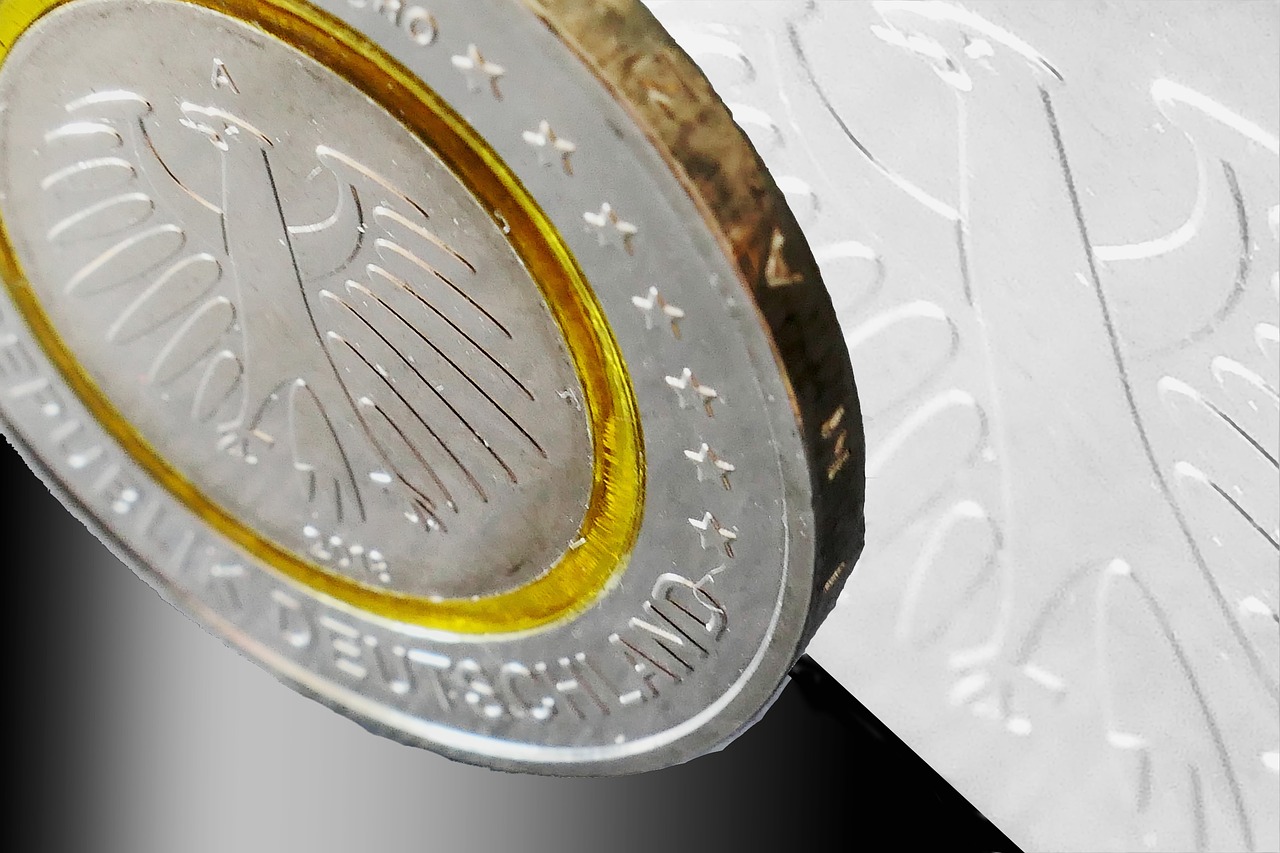
Use of Coins in Trade
When delving into the historical significance of ancient coins, one cannot overlook their crucial role in facilitating trade and commerce in ancient civilizations. Coins served as a universally accepted medium of exchange, streamlining transactions and enabling the growth of trade networks across regions. The use of coins in trade revolutionized economic interactions, allowing for the efficient exchange of goods and services.
Ancient coins played a vital role in standardizing the value of goods and services, eliminating the need for cumbersome barter systems. With a recognized and consistent value, coins simplified pricing mechanisms and facilitated smoother trade negotiations. Merchants and traders relied on coins as a trusted form of currency, enhancing the fluidity of commercial activities.
Moreover, the portability and durability of coins made them ideal for trade transactions. Unlike perishable goods or bulkier forms of currency, coins were easily transportable and resistant to wear and tear. This practicality made coins the preferred choice for conducting business transactions, whether in bustling marketplaces or remote trading outposts.
The widespread circulation of coins in trade also fostered economic growth and prosperity in ancient societies. By enabling the exchange of goods beyond local boundaries, coins stimulated economic activity and encouraged specialization in production. This diversification of trade enhanced the overall wealth and development of civilizations, laying the foundation for complex economic systems.
Furthermore, the use of coins in trade not only facilitated commercial transactions but also promoted cultural exchange and interconnectedness among diverse communities. Coins bearing distinct designs and inscriptions from various regions served as tangible symbols of cross-cultural interactions, reflecting the interconnected nature of ancient trade networks.
In essence, the utilization of coins in trade was not merely a practical necessity but a transformative force that shaped the economic landscape of ancient civilizations. The seamless integration of coins into commercial activities revolutionized the way goods and services were exchanged, paving the way for the development of sophisticated economic systems that continue to intrigue and inspire modern scholars.
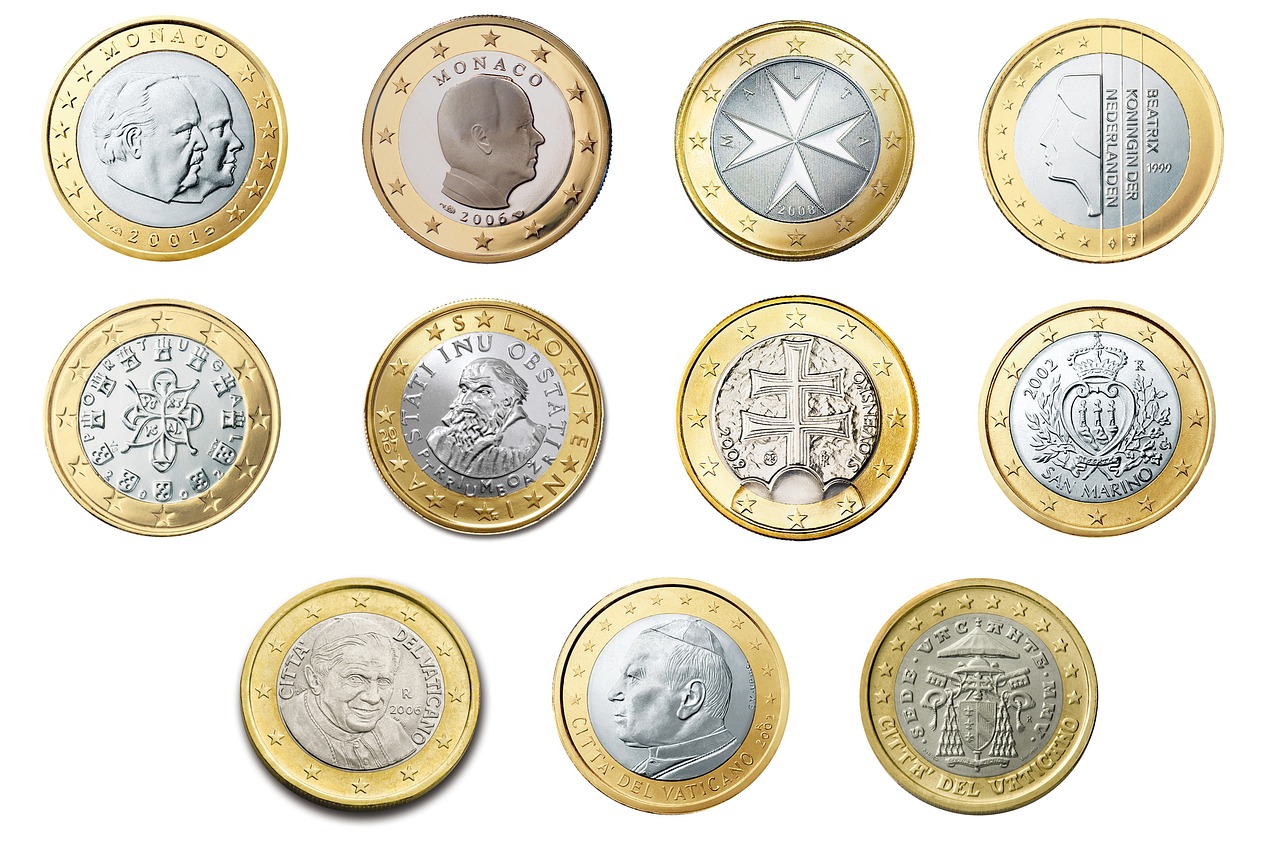
Monetary Policies in Ancient Societies
Monetary policies in ancient societies played a crucial role in shaping the economic landscape of civilizations. Unlike modern central banking systems, ancient societies often relied on intrinsic value of coins rather than fiat currency. The issuance of coins by rulers or authorities was a strategic tool to control economic activities, regulate trade, and assert political power. These coins were not only a medium of exchange but also symbolized the authority and legitimacy of the ruling entity.
Ancient monetary policies were closely tied to the prevailing economic conditions and the specific needs of the society. For example, in times of war or crisis, rulers often debased the currency by reducing the precious metal content of coins to finance their military campaigns. This led to inflation and a loss of trust in the currency among the population, ultimately affecting economic stability.
Moreover, the circulation and acceptance of coins were also influenced by the trust and confidence in the issuing authority. If a ruler was known for debasing coins or engaging in fraudulent practices, it could lead to widespread counterfeiting and devaluation of the currency, further destabilizing the economy.
Some ancient societies implemented sophisticated monetary policies to maintain the value of their currency. For instance, the Roman Empire established mints across its vast territories to ensure the uniformity and quality of coins. By standardizing the weight and purity of coins, the Romans aimed to promote trade and facilitate economic transactions within the empire.
Additionally, ancient societies often used coins as a means of propaganda to promote political ideologies or commemorate significant events. The imagery and inscriptions on coins were carefully chosen to convey messages of power, authority, and cultural values. By controlling the production and distribution of coins, rulers could effectively communicate their policies and achievements to the populace.
In conclusion, the monetary policies of ancient societies played a pivotal role in shaping their economic systems and influencing the daily lives of people. By studying the coins and monetary practices of the past, we can gain valuable insights into the economic policies, power dynamics, and societal values of ancient civilizations.

Counterfeiting and Devaluation
Counterfeiting and devaluation posed significant challenges to ancient coinage systems, threatening the stability of economies and the trust in monetary transactions. In the intricate web of trade and commerce, counterfeit coins infiltrated legitimate currency, leading to a loss of value and credibility. The art of counterfeiting required skill and deception, often resulting in economic turmoil and uncertainty among merchants and consumers alike.
Moreover, devaluation, whether intentional or due to wear and tear, impacted the purchasing power of coins. As coins circulated through various hands, they could become worn, reducing their intrinsic value. Ancient societies grappled with the dilemma of maintaining the integrity of their currency in the face of wear-induced devaluation, striving to uphold the trust and reliability essential for a functioning economic system.

Discovery of Ancient Coin Hoards
Exploring the significance of ancient coins in understanding the economic systems of civilizations throughout history, shedding light on trade, commerce, and monetary policies of bygone eras.
When archaeologists unearth ancient coin hoards, it's like stumbling upon a treasure trove that holds more than just monetary value. These collections of coins hidden or buried for various reasons provide a glimpse into the economic activities and wealth distribution of the past. Imagine the excitement of excavating a site and discovering a stash of ancient coins, each piece carrying stories of transactions, trade routes, and economic prosperity of long-lost civilizations.
Examining these coin hoards not only reveals the types of coins used in a particular region but also offers insights into the circulation patterns and monetary systems of ancient societies. The sheer volume of coins found in these hoards can indicate the level of economic activity in a given period, shedding light on the prosperity or turmoil experienced by a civilization.
Moreover, the discovery of ancient coin hoards sparks curiosity about the individuals or groups who owned these coins. Were they merchants safeguarding their wealth, rulers storing reserves for emergencies, or common people hiding their savings? Each hoard tells a unique story, adding layers to our understanding of how money was perceived and utilized in the ancient world.
By studying these hidden treasures, historians and archaeologists piece together the economic puzzle of bygone eras, connecting dots between trade networks, economic policies, and societal structures. The intricate details of each coin, the symbols engraved on them, and the materials used in their production provide valuable clues about the economic landscape of ancient civilizations.
Uncovering ancient coin hoards is not just about finding shiny artifacts but about unraveling the mysteries of the past and appreciating the economic complexities that shaped human interactions. Each coin hoard unearthed is a testament to the enduring value of numismatics in deciphering the economic histories etched in metal and preserved underground for centuries.
1. How do ancient coins help in understanding economic systems?
2. What role did symbolism play on ancient coins?
3. How were ancient coins produced and what technologies were used?
4. Why were ancient coins important in trade and commerce?
5. What impact did counterfeiting have on ancient coinage systems?
6. How do discoveries of ancient coin hoards contribute to archaeological knowledge?
7. In what ways do ancient coins influence modern economic theories?
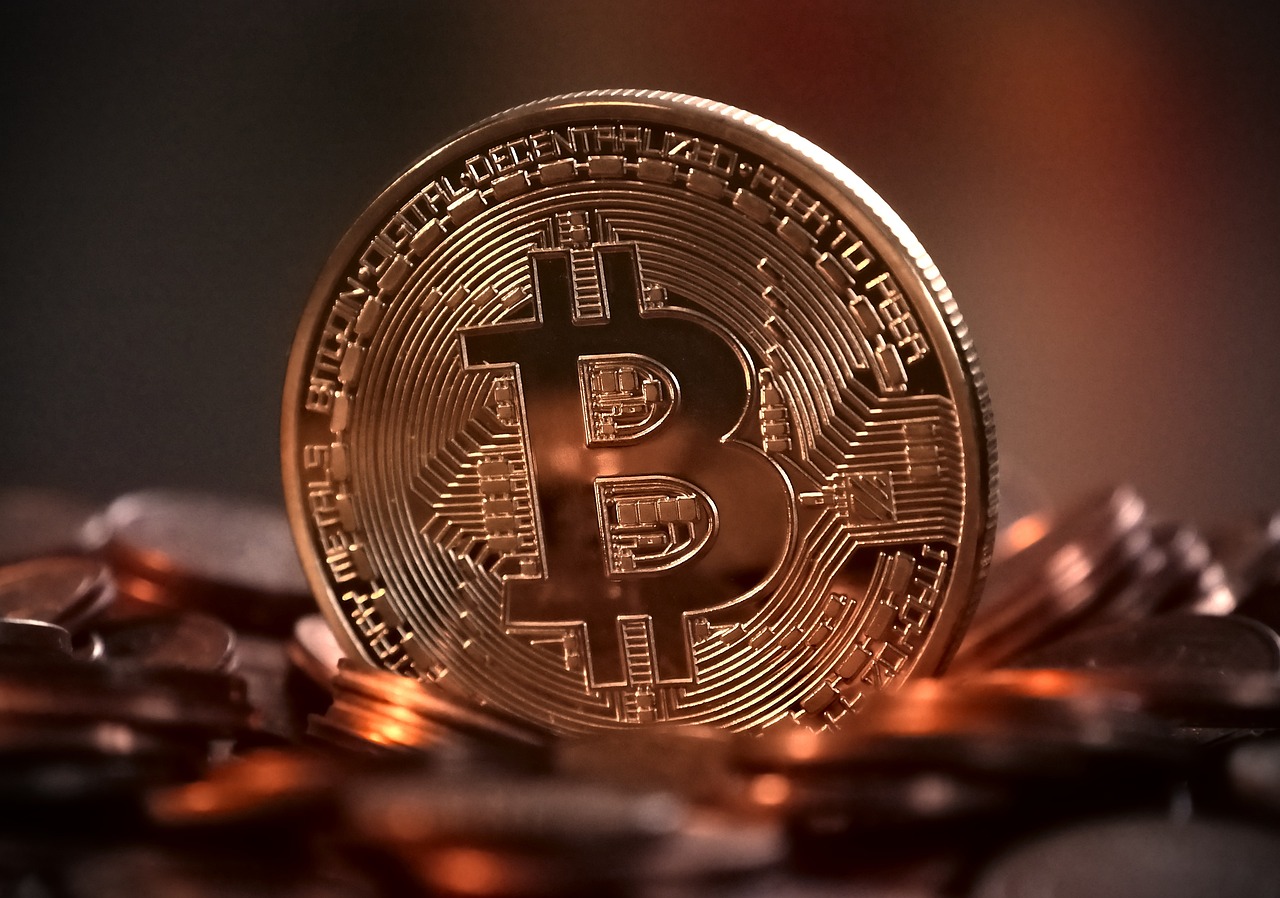
Legacy of Ancient Coins in Modern Economics
Exploring the significance of ancient coins in understanding the economic systems of civilizations throughout history, shedding light on trade, commerce, and monetary policies of bygone eras.
Tracing the evolution of coinage from early forms of currency to standardized minted coins, showcasing the development of economic systems.
Analyzing the symbolism and imagery depicted on ancient coins and how they reflect the economic, political, and cultural values of societies.
Examining the techniques and technologies used in the production of ancient coins, highlighting the craftsmanship and metallurgical knowledge of the time.
Exploring the role of coins in facilitating trade and commerce in ancient civilizations, demonstrating their importance in economic transactions.
Investigating the monetary policies implemented by ancient societies through the issuance and circulation of coins, influencing economic stability and growth.
Discussing the challenges of counterfeiting and devaluation faced by ancient coinage systems, impacting economic trust and financial stability.
Exploring the archaeological significance of discovering ancient coin hoards, providing insights into economic activities and wealth distribution.
Ancient coins hold a timeless legacy that transcends the boundaries of history, shaping the foundation of modern economics. Just like a sturdy bridge connecting the past to the present, these ancient artifacts provide valuable insights into economic theories and practices that continue to influence our financial systems today.
Frequently Asked Questions
- What is the significance of ancient coins in understanding economic systems?
Ancient coins serve as valuable artifacts that provide insights into the economic structures, trade practices, and monetary policies of past civilizations. By studying these coins, historians and economists can gain a deeper understanding of how economies functioned in different eras.
- How did coinage evolve over time?
The evolution of coinage traces back to the early forms of currency such as bartering and commodity money, eventually leading to the standardized minting of coins. This progression reflects the development of economic systems and the increasing complexity of trade and commerce.
- What do the symbols on ancient coins represent?
The symbols and imagery on ancient coins often represent the political, cultural, and economic values of the societies that produced them. These designs provide valuable insights into the beliefs and priorities of ancient civilizations.
- How were ancient coins produced?
Ancient coins were typically produced using techniques such as hammering, casting, and striking. The craftsmanship and metallurgical knowledge required for coin production highlight the technological advancements of the time.
- What role did coins play in ancient trade?
Coins played a crucial role in facilitating trade and commerce in ancient civilizations by providing a standardized medium of exchange. Their widespread use enabled economic transactions to occur more efficiently.





